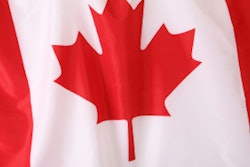
OTTAWA, ONTARIO - Long wait times in Canada for medical imaging procedures could be cut dramatically -- at least, if the Conservative Party follows through on an election pledge made today to invest $1.5 billion Canadian in new MRI and CT scanners.
The pledge would represent a huge infusion of funds from the Canadian government to the provincial governments and is sorely needed to upgrade the current installed base of medical imaging equipment across the country while expanding resource capacity for future imaging needs, according to the Canadian Association of Radiologists (CAR).
Canada's federal government doesn't directly fund the country's healthcare system but rather provides funding to individual provincial governments through transfer payments, with the financing and management of a given provincial healthcare system left to the discretion of each province.
"An investment of $1.5 billion over four years will dramatically impact patient care by helping to ensure equitable access to medical imaging for all Canadians," said Dr. Michael Barry, president of CAR and a radiologist in Saint John, New Brunswick. "We welcome this statement and feel that such an investment will reduce wait times for these life-saving procedures."
CAR had been asking for an infusion of $1.1 billion over five years to revitalize and augment Canada's inventory of medical imaging equipment.
"We are looking at a 20-year low for investment in (imaging) equipment," Barry said. "The last time there was a significant infusion in funds was about 2004."
That infusion was $2.5 billion. Now 15 years later, Barry put forth that it is imperative that there be another major injection of funds, citing statistics from the Conference Board of Canada, which recently released a report placing the estimated replacement costs for medical imaging equipment in Canada between now and 2040 at $4.4 billion.
To update the country's current stock, a total of 151 new CT scanners and 91 new MRI systems are needed, representing a total cost of $469 million, according to the conference board.
Increasingly, the current stock of medical imaging equipment is outliving its utility, Barry explained.
"The diagnostic ability of these machines is waning," he told AuntMinnie.com. "Plus, the radiation dose [that patients are exposed to] is five to 10 times higher [compared with doses from a newer piece of imaging equipment]."
"We are moving to noninvasive imaging to find answers, and new technologies allow us to do so much more," Barry said.
More than a quarter of medical imaging equipment in Canada is more than a decade old, but international standards recommend that in a given healthcare system, 60% of medical imaging equipment should be less than 5 years old, and no more than 10% of imaging equipment should be older than 10 years, according to the conference board report.
The cost of waiting
Wait times for various forms of imaging among provinces have some variation, but the issue of longer-than-acceptable wait times is a pan-Canadian problem, Barry said.
CAR and the Canadian Wait Time Alliance have published suggested wait times for radiological services in Canada based on the medical presentation of patients, with imaging of emergent, life-threatening conditions suggested to be carried out within 24 hours of onset, and imaging of nonurgent cases carried out at a maximum of 60 days after being ordered.
Barry noted that he had been involved in the care of a patient with leukemia who had complained of severe abdominal pain, a case that was regarded as somewhat urgent and in which imaging was ordered in October of 2018, but the patient only underwent imaging in August of this year.
"That is a 10-month wait," Barry said, a delay he believes is unacceptable. "It should have been 30 days or less."
In 2018, close to 263,000 Canadian patients waited an average of 50 days for a CT scan while more than 117,000 waited an average of 69 days for an MRI scan. According to the conference board, having those Canadian workers off the job while waiting for imaging procedures has a direct effect on the country's gross domestic product: $430 million did not make it into government coffers with those workers at home waiting for imaging.
With the aging of the population, the demands for medical imaging will continue to surge while wait times will continue to plague Canada's healthcare system unless new money for imaging is committed, according to Matthew Stewart, director of economics at the Conference Board of Canada and senior author of the report.
"The growth in new [imaging] machines has slowed," Stewart said. "Meanwhile, one-third of all procedures are conducted in people over the age of 65. It is not surprising the wait times are becoming worse. The aging of baby boomers is driving the need [for imaging], and there is a slow growth in the supply [of imaging equipment]."
Public support for investment in radiology
CAR's call for funding to build Canada's imaging capacity has public support, maintained Barry, pointing to a 2018 opinion poll of 1,000 Canadians conducted by Nanos Research. The poll found that more than 2 in 3 Canadians believe that Canada should allocate tax dollars to renew the suite of medical imaging technologies in the healthcare system.
"There is strong support from the public to replace our radiology equipment," Barry said. "The public is on our [radiologists'] side. There is strong support from the public to replace our radiology equipment. Our healthcare system is something that unifies Canada."



















